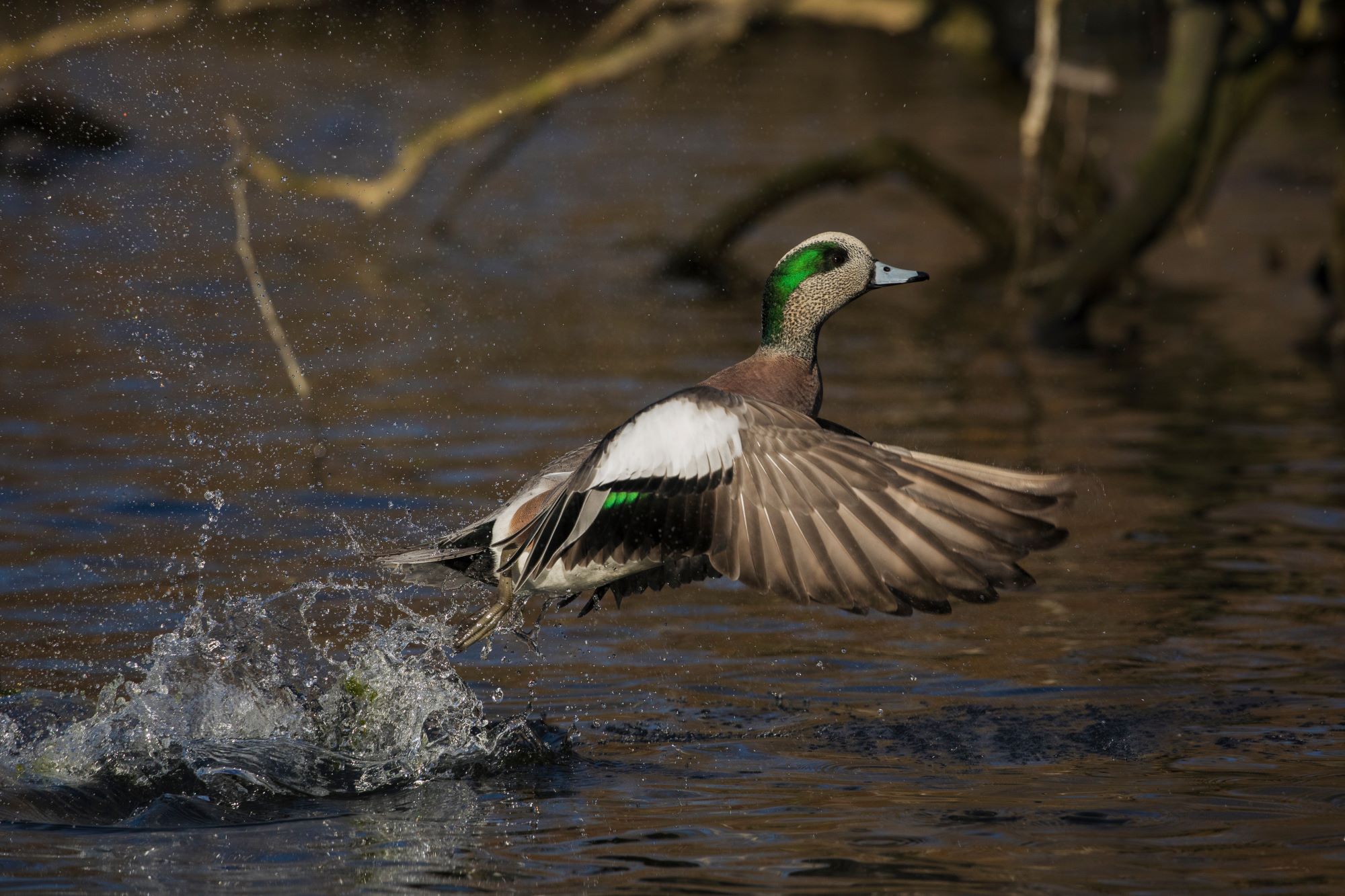
American Wigeons in Utah
American Wigeons, while not commonly breeding in Utah, are a familiar and colorful presence in the state's aquatic ecosystems, particularly during migration and winter months. Known scientifically as Mareca americana, these medium-sized dabbling ducks are easily identifiable by their distinctive plumage. Males, during the breeding season, display striking green eye patches and a conspicuous white crown, set against a backdrop of russet-colored heads and gray bodies. Females are more subdued, with mottled brown plumage that offers excellent camouflage in wetland environments. In Utah, American Wigeons are frequently observed in freshwater marshes, shallow ponds, and along the edges of lakes, where they join mixed flocks of waterfowl, contributing to the state's rich birdlife.
American Wigeons are notable for their feeding habits, which include both dabbling in shallow waters and grazing on land. They primarily feed on aquatic plants, but unlike many other duck species, they are also known to feed on grasses and grains in fields and meadows. This adaptability in their diet allows them to thrive in various environments and helps maintain the health of aquatic ecosystems by controlling the growth of vegetation. In Utah, their presence in wetlands and other water bodies plays a crucial role in these ecosystems, aiding in seed dispersal and vegetation management.
During their time in Utah, especially in the winter, American Wigeons often form large, mixed-species flocks with other dabbling ducks. This social behavior offers safety in numbers and increased efficiency in foraging. Observing these flocks, with their diverse species composition and dynamic interactions, is a fascinating aspect of birdwatching in Utah's wetlands and provides insight into the complex social behaviors of waterfowl.
Although American Wigeons only uncommonly breed in Utah, the state's wetlands provide important stopover and wintering habitats for these migratory birds. Protecting these habitats is crucial for the conservation of American Wigeons and the myriad other waterfowl species that rely on them. Efforts to preserve and restore Utah's wetlands are vital, as these areas face threats from development, pollution, and water diversion. Such conservation initiatives not only benefit the American Wigeons but also enhance the overall biodiversity and ecological health of these habitats.
For bird enthusiasts in Utah, the arrival of American Wigeons each year is an eagerly awaited event, signaling the change of seasons and the ongoing migratory cycles of waterfowl. Their distinctive plumage, feeding behaviors, and social dynamics make them a captivating subject for observation and study. The presence of American Wigeons in Utah's waterways during the non-breeding season adds to the state's avian diversity and offers birdwatchers and nature lovers alike the opportunity to witness the intricate ecological relationships that define these aquatic environments.